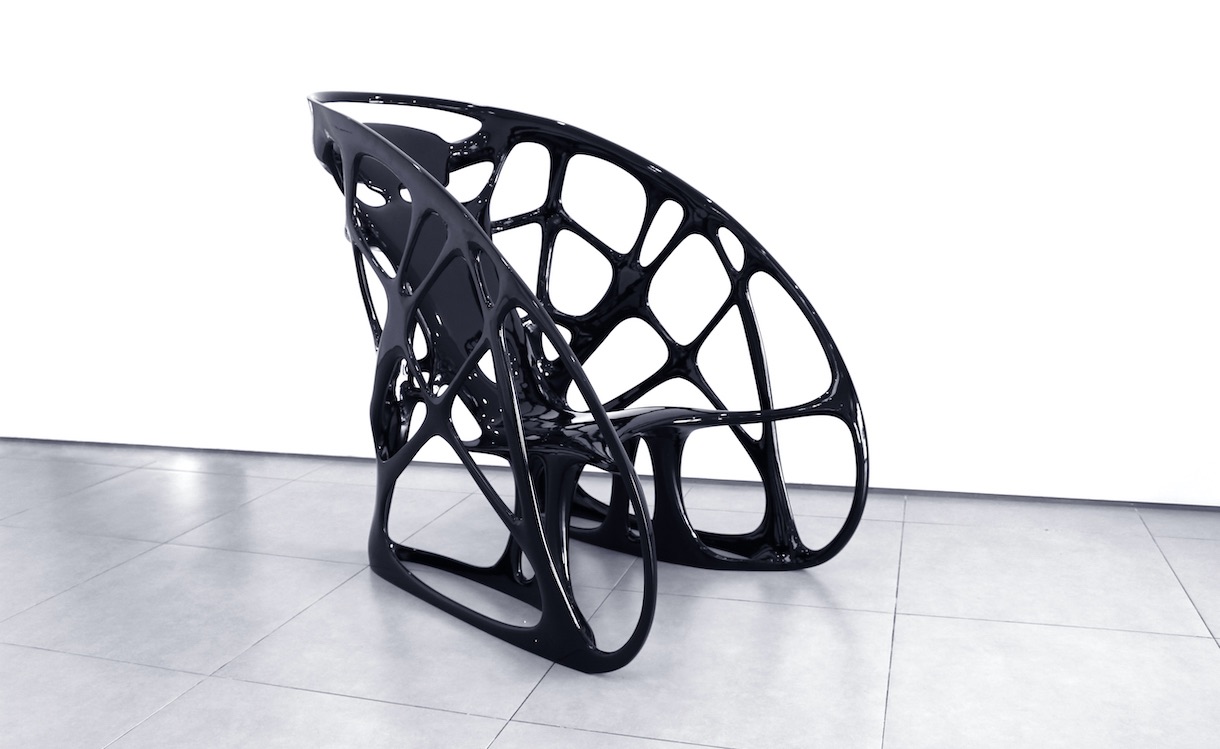Creating novel furniture through topology optimisation and advanced manufacturing, Melbourne, Australia, and Nanjing, China, 2021

About the project
Furniture plays a significant role in people’s daily life. Advanced computational and manufacturing technologies provide new opportunities to create novel, high-performance and customised furniture. This project aims to enhance furniture design and production by developing a new workflow in which computer graphics, topology optimisation and advanced manufacturing are integrated to achieve innovative outcomes.
The workflow consists of initial design, topology optimisation of the initial design, postprocessing of the optimised results, and manufacturing as well as surface treatment of the physical prototypes. Novel chairs and tables, including flat pack designs, are produced using this workflow. Both additive manufacturing and subtractive manufacturing are used. The design and fabrication processes are simple, efficient, and low-cost.
Jue chair
We design a novel armchair inspired by a Chinese ancient vessel Jue. Through topology optimisation, we consider three different scenarios of a human sitting on it. 80% of the inefficient materials are removed from the initial design. The Jue chair is fabricated in China through fused filament fabrication (FFF) printing technology. Due to its large size of 1310 × 796 × 1134 mm, the digital model is divided into several parts for 3D printing to accelerate the speed as well as lower the costs for manufacturing. Surface treatments are adopted to achieve a smooth and shining surface for the chair.
Flat pack chair and tables
Flat pack furniture is easy to be transported and stored, and thus is suitable for mass production. A flat-pack chair and two flat pack tables are designed and fabricated in Melbourne in Australia in light of the proposed workflow. We use plywood and CNC cutting for the flat pack chair to achieve a low-cost and fast fabrication combination. As for the flat pack tables, acrylic sheets and laser cutting are adopted to obtain superior surface quality. An interlocking mechanism is designed and implemented on one of the flat pack table.
In this project, we propose a new workflow to significantly reduce design constraints as well as time and cost of producing furniture. The developed workflow can be easily extended to the creation of other industrial products.
Publication
Ma, J., Li, Z., Zhao, Z.-L. and Xie, Y.M. (2021), Creating novel furniture through topology optimization and advanced manufacturing, Rapid Prototyping Journal, Vol 27 (2021) 1749 - 1758. [Full paper]
Video
- YouTube: https://www.youtube.com/watch?v=EKwR2oW8uGc
- Bilibili: https://www.bilibili.com/video/BV1ZK4y1a7ER/?spm_id_from=333.788.videocard.16
Key people involved in the project
- RMIT CISM: Jiaming Ma, Albert Li, Yi Min ‘Mike’ Xie
- RMIT Light Structure Laboratory: Xiang ‘Eric’ Gao, Shamir Bhuiyan, Pavel Ryjkov
- RMIT Technical Service Manufacturing & Fabrication: Mark Overend


